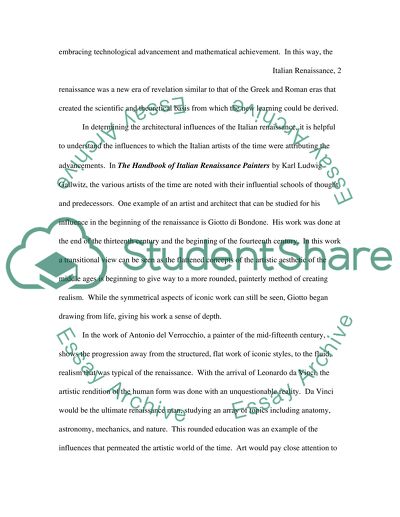Cite this document
(“Literature Review: Italian Renaissance. How did Antiquity influenced Essay”, n.d.)
Literature Review: Italian Renaissance. How did Antiquity influenced Essay. Retrieved from https://studentshare.org/miscellaneous/1550787-literature-review-italian-renaissance-how-did-antiquity-influenced-the-italian-renaissance-urban-architecture-to-what-extent-were-classical-examples-the-main-source-of-inspiration-for-the-artists-and-architects-of-the-renaissance
Literature Review: Italian Renaissance. How did Antiquity influenced Essay. Retrieved from https://studentshare.org/miscellaneous/1550787-literature-review-italian-renaissance-how-did-antiquity-influenced-the-italian-renaissance-urban-architecture-to-what-extent-were-classical-examples-the-main-source-of-inspiration-for-the-artists-and-architects-of-the-renaissance
(Literature Review: Italian Renaissance. How Did Antiquity Influenced Essay)
Literature Review: Italian Renaissance. How Did Antiquity Influenced Essay. https://studentshare.org/miscellaneous/1550787-literature-review-italian-renaissance-how-did-antiquity-influenced-the-italian-renaissance-urban-architecture-to-what-extent-were-classical-examples-the-main-source-of-inspiration-for-the-artists-and-architects-of-the-renaissance.
Literature Review: Italian Renaissance. How Did Antiquity Influenced Essay. https://studentshare.org/miscellaneous/1550787-literature-review-italian-renaissance-how-did-antiquity-influenced-the-italian-renaissance-urban-architecture-to-what-extent-were-classical-examples-the-main-source-of-inspiration-for-the-artists-and-architects-of-the-renaissance.
“Literature Review: Italian Renaissance. How Did Antiquity Influenced Essay”, n.d. https://studentshare.org/miscellaneous/1550787-literature-review-italian-renaissance-how-did-antiquity-influenced-the-italian-renaissance-urban-architecture-to-what-extent-were-classical-examples-the-main-source-of-inspiration-for-the-artists-and-architects-of-the-renaissance.


